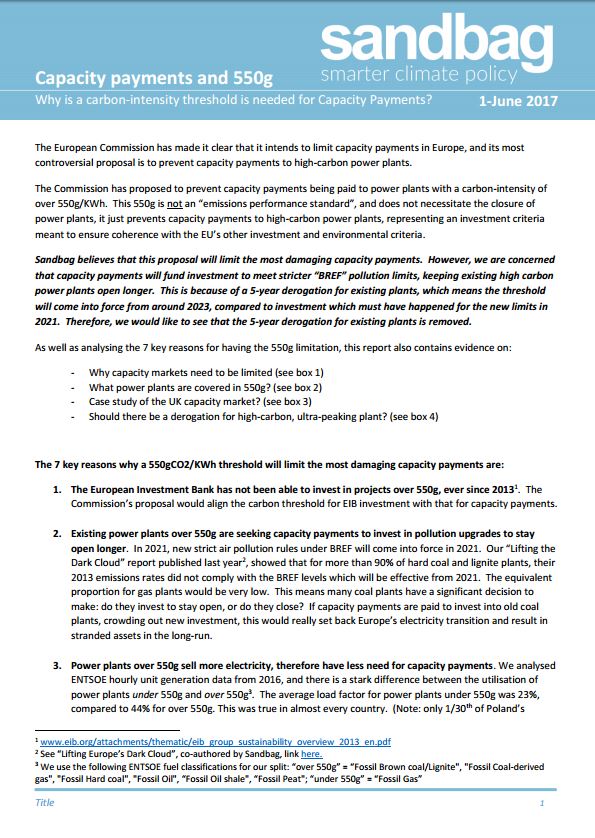The European Commission has made it clear that it intends to limit capacity payments in Europe, and its most controversial proposal is to prevent capacity payments to high-carbon power plants; those which run on hard coal and lignite.
The Commission has proposed to prevent capacity payments being paid to power plants with a carbon-intensity of over 550gCO2/KWh. This 550g is not an “emissions performance standard”, and does not necessitate the closure of power plants, it just prevents capacity payments to high-carbon power plants, representing an investment standard coherent with the EU’s other investment and environmental criteria, for instance that of the European Investment Bank.
Sandbag believes that this proposal will limit the most damaging capacity payments. However, we are concerned that capacity payments will fund investment to meet stricter “BREF” pollution limits, keeping existing high carbon power plants open longer. This is because of a 5-year derogation for existing plants, which means the threshold will come into force from around 2023, compared to investment which must have happened for the new limits in 2021. Therefore, we would like to see that the 5-year derogation for existing plants is removed.
As well as analysing the seven key reasons for having the 550g/KWh limitation, this report also contains evidence on:
- Why capacity markets need to be limited (see box 1)
- What power plants are covered in 550g? (see box 2)
- Case study of the UK capacity market? (see box 3)
- Should there be a derogation for high-carbon, ultra-peaking plant? (see box 4)
A 550gCO2/KWh threshold will limit the most damaging capacity payments: Click here to download the PDF.
Report released 1st June 2017

